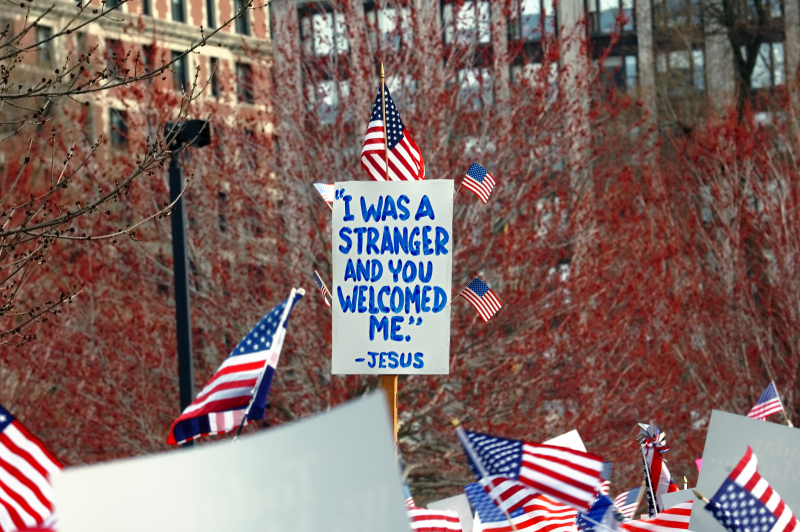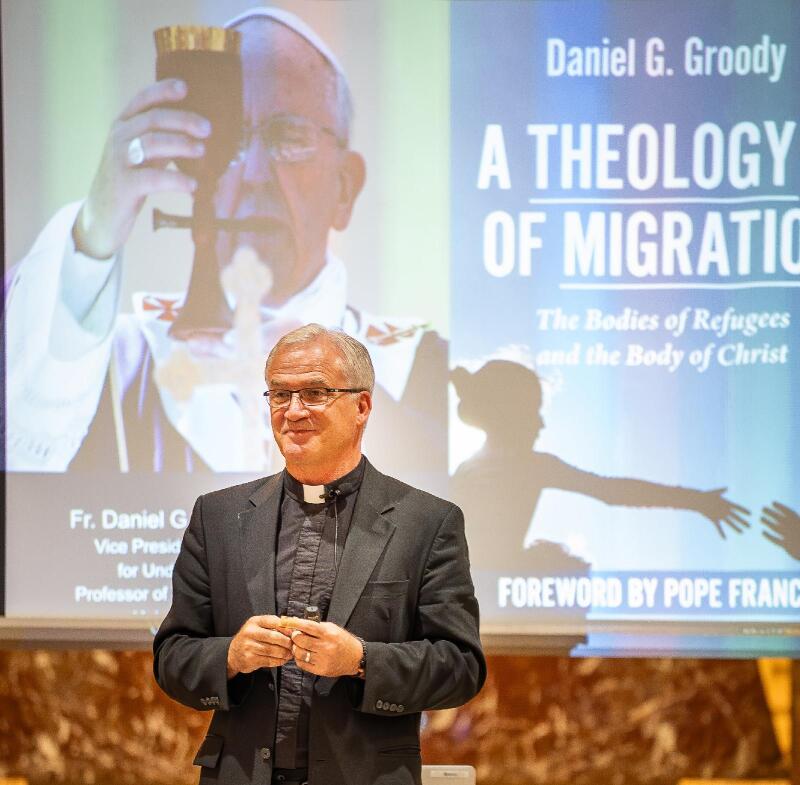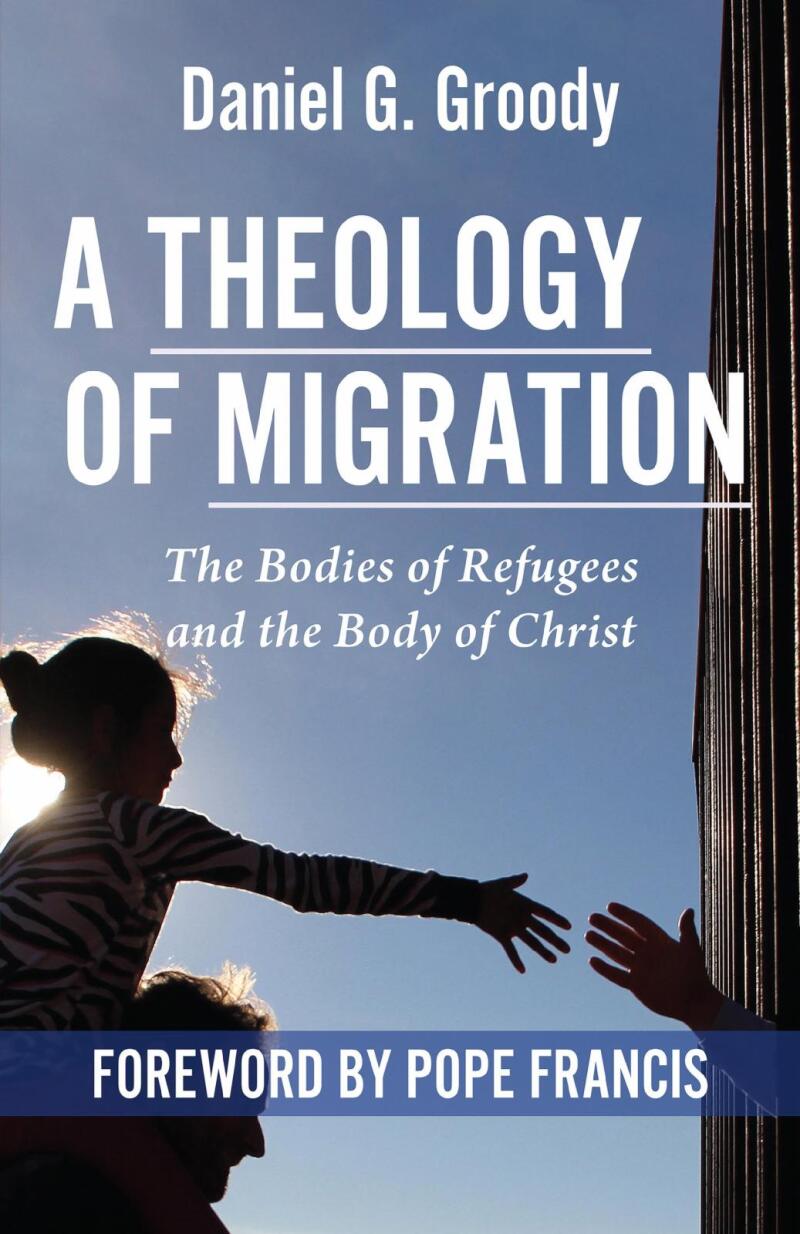
Catholic bishops mark National Migration Week; Notre Dame hosts reflection on the topic
Jill Boughton , OSV News
09/18/2024

Significant resources of the Catholic Church in the United States are available for those wishing to explore, discuss or research the complex topic of migration.
The World Day of Migrants and Refugees (WDMR), which falls on Sunday, Sept. 29 in 2024, is an opportunity for both the global church and the Catholic faithful to engage in prayer, reflection and action on behalf of our brothers and sisters who are migrants. The theme for this year’s WDMR is “God walks with his people,” based on a letter from Pope Francis available here. Numerous resources and links to helpful information, including a personal, two-minute video message from Pope Francis, can be found on the Vatican’s Dicastery for Promoting Integral Human Development website.
National Migration Week is a uniquely American-based celebration that builds on the ideas put forth in WDMR. This year, National Migration Week will be marked September 23-29, culminating with WDMR on Sept. 29.
The United States Conference of Catholic Bishops oversees a Justice for Immigrants website, and has dedicated a page to WDMR/NMW, which offers additional ideas in a toolkit available in both English and Spanish. The cite includes activities and educational resources, along with prayer resources and homily notes that can be used in parishes, schools and small group settings.
Those interested in keeping abreast of this topic throughout the year are invited to sign up for the free Justice for Immigrants listserv promoted by the USCCB.
In preparation for National Migration Week, what follows is a story from Our Sunday Visitor about a new book on migration by Theologian Father Daniel Groody.
SOUTH BEND, Ind. — The first thing Holy Cross Father Daniel G. Groody, a theologian, had to figure out was, "Is there a theology of migration?" So he began with Scripture.
There he found a saga of pilgrimage including the call of Abraham, the exile and return, and the refugee status of the Holy Family.
But the most striking discovery he shared Sept. 4 with about 200 people gathered at the Co-Cathedral of

president and professor of theology and global affairs, speaks
during a lecture on his book, "A Theology of Migration," at St.
Matthew Cathedral in South Bend, Ind., Sept. 4, 2024. The
event was hosted by Catholic Charities of the Diocese of Fort
Wayne-South Bend.
OSV News photo/Scott Warden, courtesy Today's Catholic
St. Matthew in South Bend was this: God so loved the world that he left his heavenly homeland and migrated to become one of us, laying down his life so that we in turn could complete our pilgrimage to our lasting homeland.
Bishop Kevin C. Rhoades of Fort Wayne-South Bend introduced Father Groody, a professor of theology and global affairs at the University of Notre Dame and an internationally known authority on refugees and migration. Dan Florin, CEO of Catholic Charities of the Fort Wayne-South Bend Diocese, an agency long active in refugee resettlement, concluded the session.
In his remarks, Bishop Rhoades shared a story of his visit to a shelter in the Gaza Strip where a crippled child crawled into his lap and refused to let go. That story came in response to a question by Carolyn Woo, former CEO of Catholic Relief Services, about how hard it is to leave a place of intense suffering to return home to a comfortable life.
Father Groody's latest book is "A Theology of Migration: The Bodies of Refugees and the Body of Christ" (Orbis, 2022), with a preface by Pope Francis. Father Groody has also served as a filmmaker and adviser to the U.S. Congress, the U.S. Conference of Catholic Bishops, the Vatican and the United Nations.
At Notre Dame, he is vice president and associate provost for undergraduate education, a professor and trustee.
After some initial challenges with his microphone, Father Groody shared a humorous experience. He once told his congregation, "There's something wrong with my mic" and got the response, "And with your spirit."
He also described an early experience he had as a young priest when he wound up taking a pregnant young parishioner to the hospital when her mother's car wouldn't start. He compared immigration to the process of giving birth, and pointed out that migration is part of humanity's DNA.
Father Groody loosely structured his talk around parts of the Mass: the introduction, liturgy of the Word, liturgy of Eucharist and sending on mission.
He began by sharing statistics offering a snapshot of what is happening with migration today: 281 million people have been away from their homeland for more than a year, the most in human history, growing at a rate of 24 people per minute. The number is even more staggering if those displaced within their own countries are included. But behind these numbers are the faces and stories of vulnerable individuals.
The issue is at once very complex and very simple. By spending time with different groups ranging from vigilantes to church leaders, Father Groody has been able to identify competing rights that are all part of the picture: property rights, national rights, cultural rights, economic rights, natural rights and human rights.

Migration," by Father Daniel
Groody. CNS photo/courtesy
Lauren Fox, University of
Notre Dame
There are varying political positions, according to Father Groody: to close off and protect, to create a porous border welcoming guest workers, and to advocate legalization or even open borders. The narrative that is told about migration and the terms used to tell the story make a difference, he said. Are these people "aliens," "illegals" or "undocumented," workers, or human beings created in God's image? How do we regard the "other" in relationship to ourselves: object of fear, useful or essentially connected?
In structuring his talk around the parts of the Mass, he noted that in the liturgy of the Eucharist, the faithful encounter the image of God, bridging the gap between "non-human" and human; the Word of God, bridging the gap between divine and human; the mission of God, bridging the gap between human and human by rejecting rejection; the vision of God, bridging the gap between nations and kingdoms; and the imitation of God, bridging the gap between life and death.
After the presentation, one questioner, self-identified as an immigrant, asked about the final phase -- mission or sending: "What are best practices? Where do we go from here?"
Father Groody chose to leave that question in the hearts of his listeners.
Jill A. Boughton writes for OSV News from South Bend, Indiana.
-
